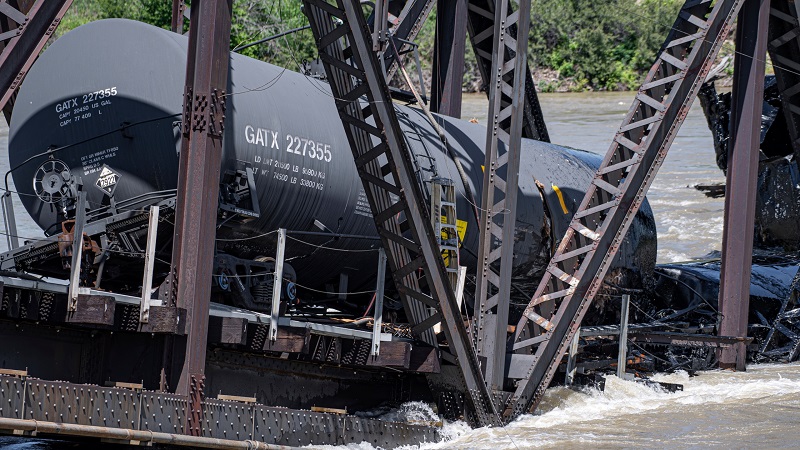Billings, Montana – Since Yellowstone County has been fighting a southern Montana passenger train route for months, officials say the recent derailment has further strengthened their resistance.
According to County Commissioner John Ostlund, the expense is the main deterrent to passenger rail, but since last week’s catastrophe near Reed Point, a safety concern has been thrown to the mix.
“Spending billions to make millions doesn’t seem like a good investment,” Ostlund said. “In 1890, it was the best way to cross the country. In 2023, it’s the slowest way to cross the country.”
Ostlund contends that Montanans would not benefit from the inefficiency and that building a passenger rail network in the state would be expensive. In a state that strongly relies on the movement of goods across state boundaries, he was also concerned that the additional infrastructure might result in negative delays.
“Rail is much different than highways, where you have a lot of opportunities to reroute it,” Ostlund said. “If you have a bridge failure in the railroad, then you have to go down to Wyoming or up to the Hi-Line. If those routes aren’t critically ready for passenger rail at a huge expense, then you’ll have another problem to deal with.”
Ostlund acknowledged the significance of freight in Montana and stated that infrastructure improvements are definitely needed, particularly in light of the most recent derailment.
“Everything that comes in and out of Montana goes on trains, so it is super important that we make sure the infrastructure is steady,” Ostlund said. “That (derailment) was kind of a wake-up call for everybody. I think the infrastructure is vulnerable all across the United States.”
Others are still advocating for a southern passenger rail line even if Yellowstone County is one of the main opponents. According to Missoula’s Dave Strohmaier, chairman of the Big Sky Passenger Rail Authority, the extra rail line would have a significant positive economic impact on the entire state.
“Here in Montana, we need to look no further than the Hi-Line to see the benefits of passenger rail,” Strohmaier said. “In some of those more rural communities, it’s a lifeline because they depend on passenger rail for transportation.”
Furthermore, according to Strohmaier, safety measures are usually taken into account when talking about passenger rail, therefore the most recent derailment has no bearing on this.
“Whether it’s freight operations or passenger rail operations, we want to see the investments to make sure we have safe operations out there,” Strohmaier said.
And Stromaier argued that infrastructure should always be rigorously scrutinized while pointing out that roads and interstates are constantly being improved.
“We are investing in our highways and our streets because we think that’s important,” Strohmaier said. “So, let’s not kid ourselves to hold passenger rail to a different standard.”
Even still, according to Ostlund, the cost of maintaining a different form of transportation is not justified by the planned additional line.
“If an interstate or highway is closed, there are easy and safe frontage road options,” Ostlund said. “Rails are not like that, and I think adding another line would cause serious delays.”



